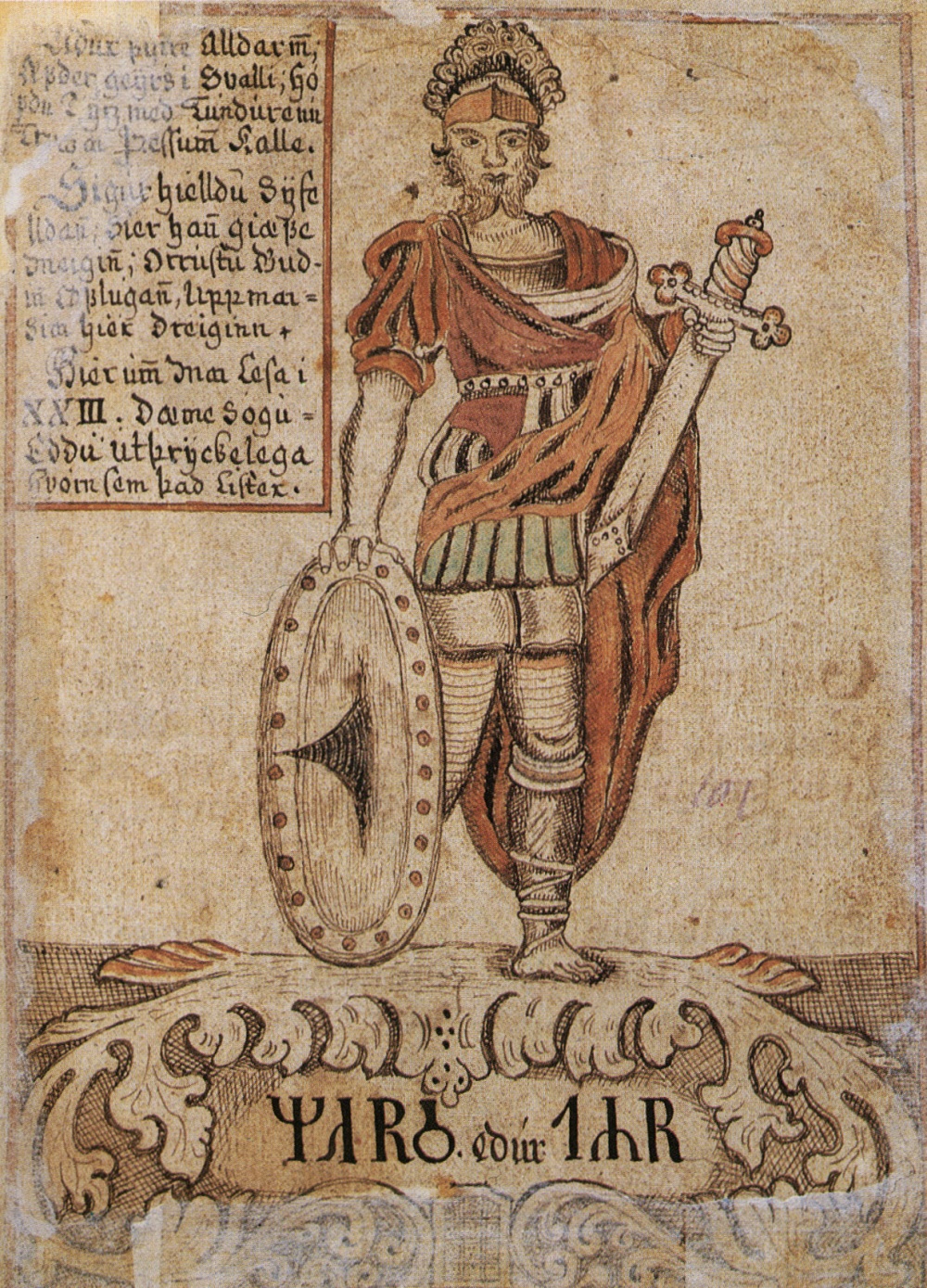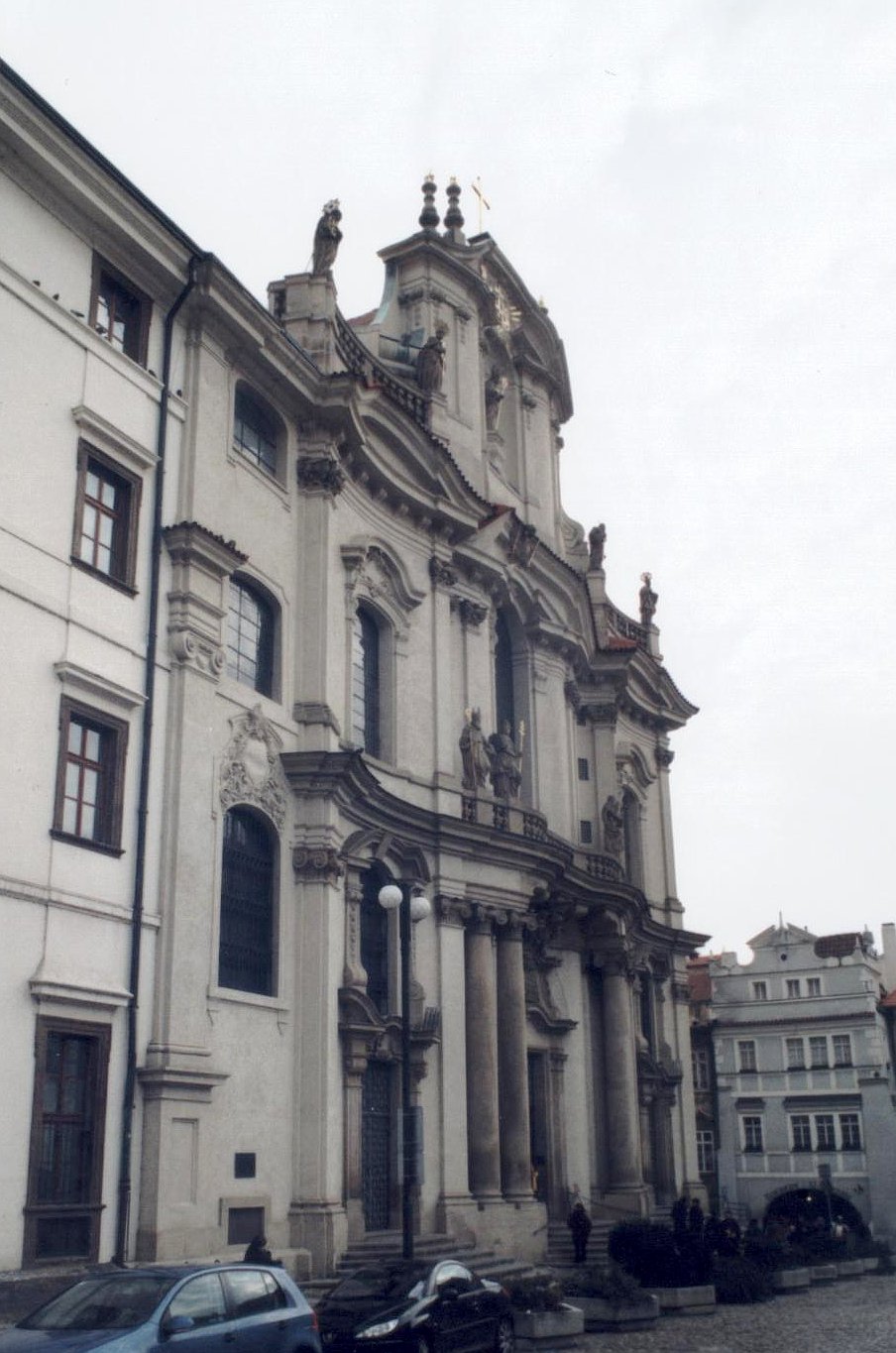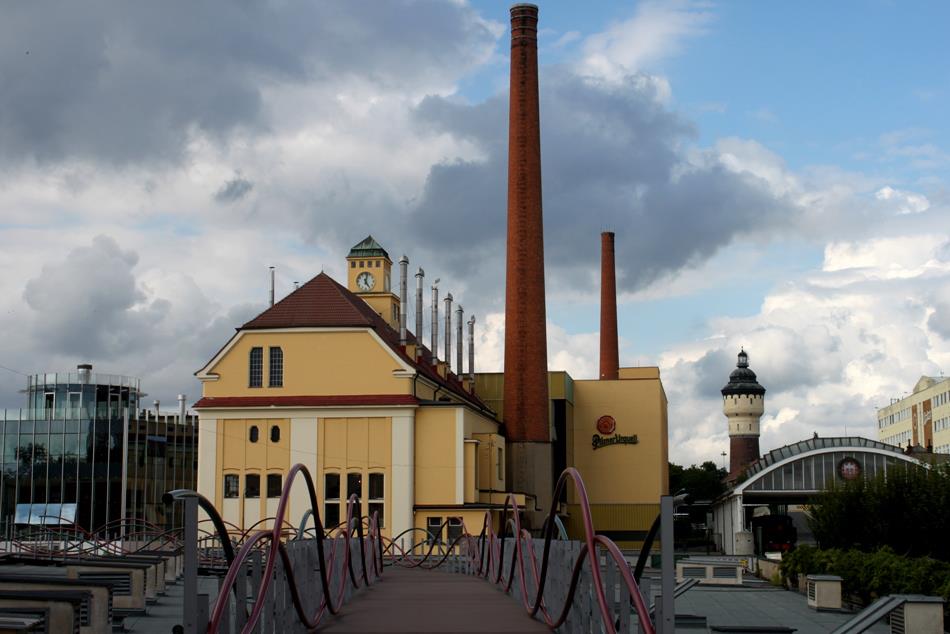|
ГҡterГҪ
ГҡterГҪ () is a town in PlzeЕҲ-North District in the PlzeЕҲ Region of the Czech Republic. It has about 400 inhabitants. The historic town centre is well preserved and is protected as an Cultural monument (Czech Republic)#Monument zones, urban monument zone. Administrative division ГҡterГҪ consists of three municipal parts (in brackets population according to the 2021 census): *ГҡterГҪ (316) *OleЕЎovice (87) *VidЕҫГӯn (28) Etymology The name of the town literally means 'Tuesday'. Geography ГҡterГҪ is located about northwest of PlzeЕҲ. It lies in the TeplГЎ Highlands. The highest point is the hill StДӣnskГҪ vrch at above sea level. The stream of ГҡterskГҪ potok flows through the town. History The town was probably founded in 11th century, however the first written mention is from 1233. Demographics Economy Almost half of houses in ГҡterГҪ are recreational objects. Transport There are no railways or major roads passing through the municipality. Sights The main landmark of th ... [...More Info...] [...Related Items...] OR: [Wikipedia] [Google] [Baidu] |
PlzeЕҲ-North District
PlzeЕҲ-North District () is a Okres, district in the PlzeЕҲ Region of the Czech Republic. Its capital is the city of PlzeЕҲ. The most populated town of the district is NГҪЕҷany. Administrative division PlzeЕҲ-North District is divided into two Districts of the Czech Republic#Municipalities with extended competence, administrative districts of municipalities with extended competence: Kralovice and NГҪЕҷany. List of municipalities Towns are marked in bold: BdenДӣves - BezvДӣrov - BГӯlov (PlzeЕҲ-North District), BГӯlov - Blatnice (PlzeЕҲ-North District), Blatnice - BlaЕҫim (PlzeЕҲ-North District), BlaЕҫim - Bohy - Brodeslavy - BuДҚГӯ - ДҢeminy - ДҢernГӯkovice (PlzeЕҲ-North District), ДҢernГӯkovice - ДҢerЕҲovice - ДҢeskГЎ BЕҷГӯza - ChotГӯkov - ChЕҷГӯДҚ - DobЕҷГӯДҚ (PlzeЕҲ-North District), DobЕҷГӯДҚ - Dolany (PlzeЕҲ-North District), Dolany - DolnГӯ BДӣlГЎ - DolnГӯ HradiЕЎtДӣ - DraЕҫeЕҲ - DruztovГЎ - HeЕҷmanova HuЕҘ - Hlince - HnДӣvnice - Holovousy (PlzeЕҲ-North District), Holovousy - H ... [...More Info...] [...Related Items...] OR: [Wikipedia] [Google] [Baidu] |
PlzeЕҲ Region
PlzeЕҲ Region or PlzeЕҲskГҪ Region (also known as Pilsen Region; ) is an Regions of the Czech Republic, administrative unit () of the Czech Republic, located in the western part of the historical land of Bohemia and named after the capital, PlzeЕҲ. In terms of area, PlzeЕҲ Region is 7,561 km2, the third largest region in the Czech Republic. However, with a population of about 585,000 inhabitants it is the ninth most populous region. After the South Bohemian Region it is the second least densely populated region. The region can be roughly divided into two parts: a highly industrialized north-eastern part with a strong engineering tradition around Pilsen () and a more hilly and rural south-western part with smaller-sized manufacturing companies processing natural resources. The region borders the Karlovy Vary Region (to the north-west), ГҡstГӯ nad Labem Region (to the north), Central Bohemian Region (north-east), South Bohemian Region (to the east) and with Bavaria (part of G ... [...More Info...] [...Related Items...] OR: [Wikipedia] [Google] [Baidu] |
Kilian Ignaz Dientzenhofer
Kilian Ignaz Dientzenhofer (; 1 September 1689 вҖ“ 18 December 1751) was a German Bohemians, German Bohemian architect of the Baroque architecture, Baroque era. He is among the most prolific and renowned architects of his era in Bohemia. He was born into the well known Dientzenhofer family of architects and is considered its most talented and productive member. Life Kilian Ignaz Dientzenhofer was born on 1 September 1689 in Prague, Kingdom of Bohemia, Bohemia. He was the second son of the Germans, German architect Christoph Dientzenhofer and Maria Anna Aichbauer (nГ©e Lang), widow of the architect Johann Georg Aichbauer the Elder. He graduated from the Jesuits, Jesuit gymnasium in Prague-MalГЎ Strana and in 1709 or 1710 he went abroad, where he got to know the architecture of Holy Roman Empire, Germany, Kingdom of France, France and Italian city-states, Italy. He then worked as an apprentice in Vienna for the architect Johann Lukas von Hildebrandt. In 1716, he returned to Bohemia. ... [...More Info...] [...Related Items...] OR: [Wikipedia] [Google] [Baidu] |
Obec
(, ; plural ) is the Czech and Slovak word for a municipality (in the Czech Republic, in Slovakia and abroad). The literal meaning of the word is " commune" or " community". It is the smallest administrative unit that is governed by elected representatives. Cities and towns are also municipalities. Definition The legal definition (according to the Czech code of law with similar definition in the Slovak code of law) is: ''"The municipality is a basic territorial self-governing community of citizens; it forms a territorial unit, which is defined by the boundary of the municipality."'' Every municipality is composed of one or more cadastral areas. Every municipality is also composed of one or more municipal parts (), which are usually town quarters or villages. A municipality can have its own flag and coat of arms. Czech Republic Almost the entire area of the Czech Republic is divided into municipalities, with the only exception being military training areas. The smaller mu ... [...More Info...] [...Related Items...] OR: [Wikipedia] [Google] [Baidu] |
Tuesday
Tuesday is the day of the week between Monday and Wednesday. According to international standard ISO 8601, Monday is the first day of the week; thus, Tuesday is the second day of the week. According to many traditional calendars, however, Sunday is the first day of the week, so Tuesday is the third day of the week. In some Muslim countries, Saturday is the first day of the week and thus Tuesday is the fourth day of the week. The English name is derived from Middle English , from Old English meaning "TД«w's Day", the day of Tiw or TГҪr, the god of single combat, law, and justice in Norse mythology. Tiw was equated with Mars in the , and the name of the day is a translation of Latin . Etymology The name ''Tuesday'' derives from the Old English and literally means "Tiw's Day". Tiw is the Old English form of the Proto-Germanic god ''*TГ®waz'', or TГҪr in Old Norse. ''*TГ®waz'' derives from the Proto-Indo-European base ''*dei-'', ''*deyДҒ-'', ''*dД«dyДҒ-'', meaning 'to shine', ... [...More Info...] [...Related Items...] OR: [Wikipedia] [Google] [Baidu] |
Christoph Dientzenhofer
Christoph Dientzenhofer (; 7 July 1655 in St. Margarethen вҖ“ 20 June 1722 in Prague)Deutsche Biografie: "Dientzenhofer, Christoph von" , retrieved 23 September 2012 ''(in German)'' was a Bavarian architect of South-German, Austrian and Bohemian . He was a member of the famous Dientzenhofer family of architects, and the father of . Among his works are the Church of St. Nicholas (1703вҖ“17 ... [...More Info...] [...Related Items...] OR: [Wikipedia] [Google] [Baidu] |
TeplГЎ Highlands
TeplГЎ () is a town in Cheb District in the Karlovy Vary Region of the Czech Republic. It has about 2,900 inhabitants. The historic town centre is well preserved and is protected by law as urban monument zone. Administrative division TeplГЎ consists of 24 municipal parts (in brackets population according to the 2021 census): *TeplГЎ (2,159) *Babice (20) *Beranov (37) *Beranovka (10) *Beroun (22) *BezvДӣrov (3) *Bohuslav (12) *ДҢГӯhanГЎ (8) *HeЕҷmanov (41) *HornГӯ KramolГӯn (13) *HoЕЎtДӣc (21) *Jankovice (6) *Kladruby (31) *KlГЎЕЎter (123) *KЕҷepkovice (32) *MrГЎzov (51) *Nezdice (3) *PДӣkovice (43) *Popovice (31) *Poutnov (85) *Rankovice (14) *SluЕҫetГӯn (59) *StarГ© Sedlo (26) *ZahrГЎdka (9) Etymology The name TeplГЎ means 'warm'. The town was named after the TeplГЎ River that flows through it, known for its warm water and thermal springs in its lower course. Geography TeplГЎ is located about south of Karlovy Vary. It lies in the TeplГЎ Highlands. The highest point is the ... [...More Info...] [...Related Items...] OR: [Wikipedia] [Google] [Baidu] |
PlzeЕҲ
PlzeЕҲ (), also known in English and German as Pilsen (), is a city in the Czech Republic. It is the Statutory city (Czech Republic), fourth most populous city in the Czech Republic with about 188,000 inhabitants. It is located about west of Prague, at the confluence of four rivers: MЕҫe, Гҡhlava, Гҡslava and Radbuza, together forming the Berounka River. Founded as a royal city in the late 13th century, PlzeЕҲ became an important town for trade on routes linking Bohemia with Bavaria. By the 14th century it had grown to be the third largest city in Bohemia. The city was besieged three times during the 15th-century Hussite Wars, when it became a centre of resistance against the Hussites. During the Thirty Years' War in the early 17th century the city was temporarily occupied after the Siege of PlzeЕҲ. In the 19th century, the city rapidly industrialised and became home to the Е koda Works, which became one of the most important engineering companies in Austria-Hungary and later ... [...More Info...] [...Related Items...] OR: [Wikipedia] [Google] [Baidu] |
Czech Republic
The Czech Republic, also known as Czechia, and historically known as Bohemia, is a landlocked country in Central Europe. The country is bordered by Austria to the south, Germany to the west, Poland to the northeast, and Slovakia to the southeast. The Czech Republic has a hilly landscape that covers an area of with a mostly temperate Humid continental climate, continental and oceanic climate. The capital and largest city is Prague; other major cities and urban areas include Brno, Ostrava, PlzeЕҲ and Liberec. The Duchy of Bohemia was founded in the late 9th century under Great Moravia. It was formally recognized as an Imperial Estate of the Holy Roman Empire in 1002 and became Kingdom of Bohemia, a kingdom in 1198. Following the Battle of MohГЎcs in 1526, all of the Lands of the Bohemian Crown were gradually integrated into the Habsburg monarchy. Nearly a hundred years later, the Protestantism, Protestant Bohemian Revolt led to the Thirty Years' War. After the Battle of White ... [...More Info...] [...Related Items...] OR: [Wikipedia] [Google] [Baidu] |
Cultural Monument (Czech Republic)
The cultural monuments of the Czech Republic ( Czech: ''kulturnГӯ pamГЎtka'') are protected properties (both real and movable properties) designated by the Ministry of Culture of the Czech Republic. Cultural monuments that constitute the most important part of the Czech cultural heritage may be declared national cultural monuments ( Czech: ''nГЎrodnГӯ kulturnГӯ pamГЎtka'') by a regulation of the Government of the Czech Republic. The government may also proclaim a territory, whose character and environment are determined by a group of immovable cultural monuments or archaeological finds, as a whole, as a monument reservation. The Ministry of Culture may proclaim a territory of a settlement with a smaller number of cultural monuments, a historical environment or part of a landscape area that displays significant cultural values as a monument zone. As of 2019, there are 14 Czech cultural monuments on the World Heritage List. Proclaiming Objects as Cultural Monuments The criter ... [...More Info...] [...Related Items...] OR: [Wikipedia] [Google] [Baidu] |
Regions Of The Czech Republic
Regions of the Czech Republic ( ; singular ) are higher-level territorial self-governing units of the Czech Republic. History The first regions (''kraje'') were created in the Kingdom of Bohemia in the 14th century. At the beginning of the 15th century, Bohemia was already divided into 12 regions, but their borders were not fixed due to the frequent changes in the borders of the estates. During the reign of George of PodДӣbrady (1458вҖ“1471), Bohemia was divided into 14 regions, which remained so until 1714, when their number was reduced to 12 again. From 1751 to 1850, after the four largest regions were divided, the kingdom consisted of 16 regions. Between 1850 and 1862, there were several reforms and the number of regions fluctuated between 7 and 13. Due to the parallel establishment of political districts in 1848, however, their importance declined. In 1862, the regions were abolished, although the regional authorities had some powers until 1868. Moravia was divided into ... [...More Info...] [...Related Items...] OR: [Wikipedia] [Google] [Baidu] |




